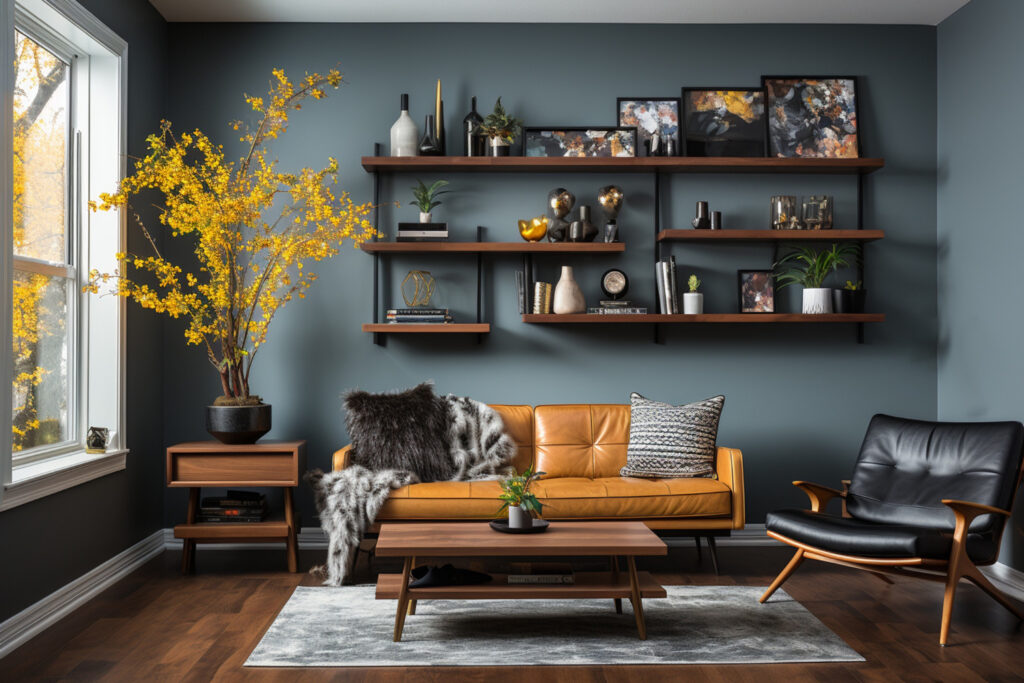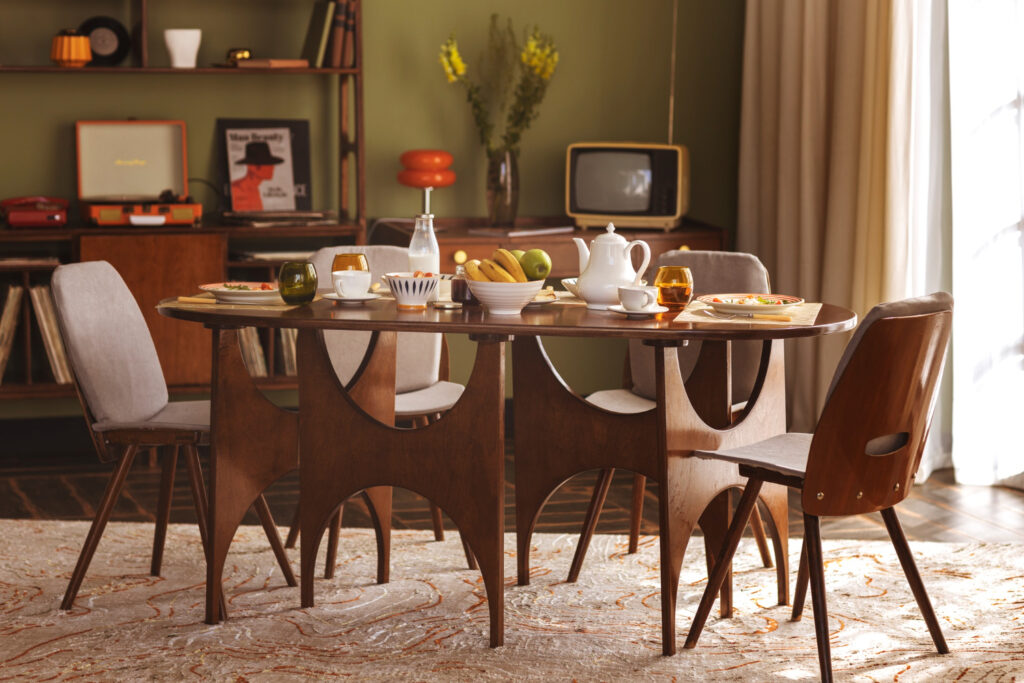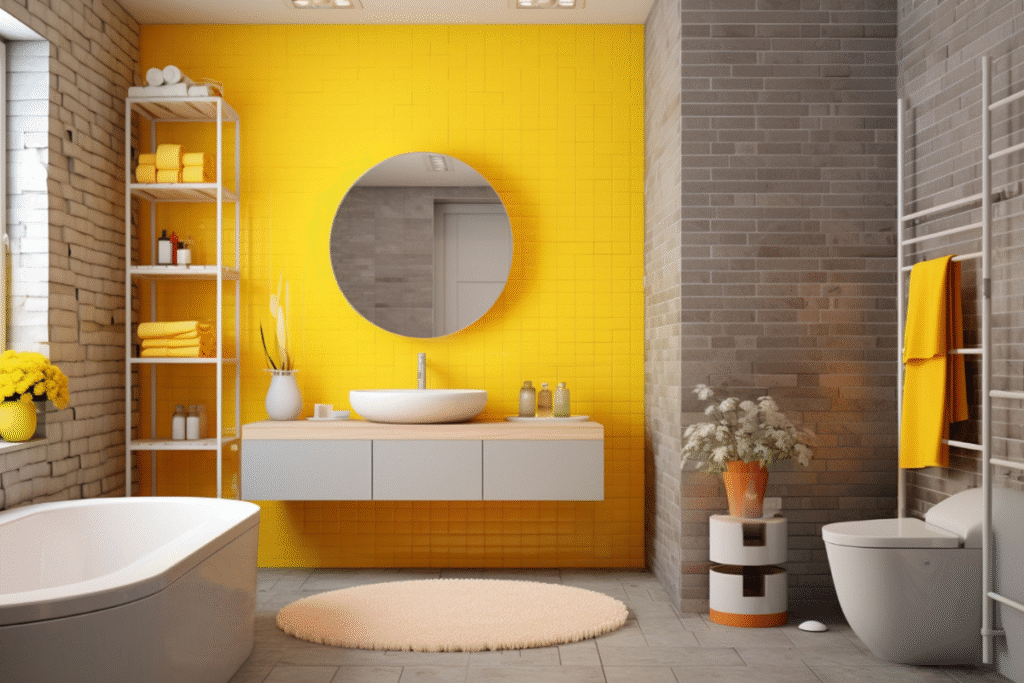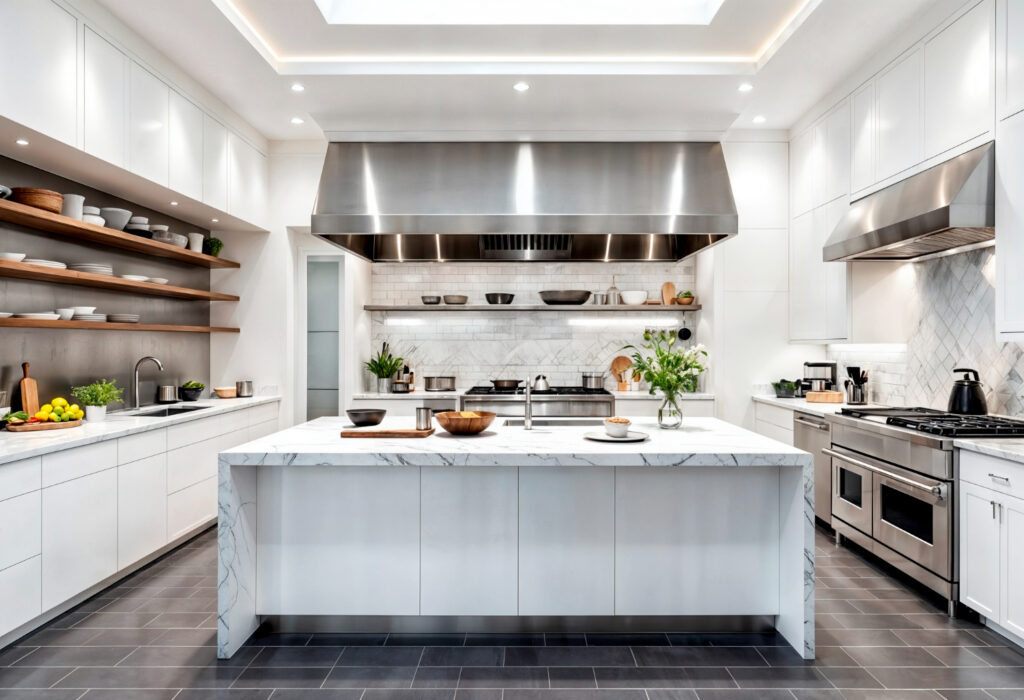The living room is more than just a space for sitting—it’s the heart of a home. It’s where families gather, friends are welcomed, and quiet moments of relaxation unfold. Because this space serves so many purposes, designing it well can make a big difference in how your entire home feels.
When people search for living room ideas, they’re often looking for inspiration that is both stylish and practical. The best designs balance comfort, personality, and functionality. Whether you want a cozy retreat, a modern showpiece, or a mix of old and new, there are endless ways to transform your living room into a space you truly enjoy.
In this guide, we’ll explore timeless design principles, trending looks for 2025, and smart tips that suit different lifestyles and budgets. Each idea is rooted in real interior design expertise, giving you both inspiration and practical steps to make your living room work beautifully for you.
20 Trending Living Room Ideas
1. Eclectic Collected Decor
An eclectic living room tells a story. Instead of sticking to one strict style, this approach combines pieces from different times and places. A vintage coffee table might sit next to a sleek modern sofa, while artwork and textiles add personality. The key to success is balance—choose a few unifying elements, like color tones or textures, so the space feels intentional rather than cluttered. This style works especially well for people who enjoy travel, family heirlooms, or simply want their living room to reflect their unique journey.
2. Bold Moody Color Palettes
Gone are the days when living rooms had to be light and neutral. Deep, moody colors such as navy, forest green, or charcoal gray are becoming popular because they bring depth and coziness. A dark backdrop also makes lighter accents—like metallic lamps, textured rugs, or bold artwork—stand out beautifully. When using rich colors, balance is important. Pair them with warm wood tones, soft fabrics, or natural light to prevent the room from feeling too heavy.
3. Full-Room Color Drenching
Color drenching is about commitment. Instead of painting just one wall, you extend the same color across the walls, trim, and even the ceiling. The result is a cocoon-like space with strong character. Softer hues, like sage green or clay, create a calming effect, while saturated shades such as burgundy or teal add drama. This technique works well in both large and small living rooms, as it eliminates visual breaks and makes the space feel unified.
4. Statement Ceilings
For years, ceilings were ignored in design. Now, they are becoming a focal point. A statement ceiling can completely change the mood of a room. Options include bold paint colors, patterned wallpaper, wood beams, or decorative molding. Even subtle touches, like a contrasting trim color, can draw the eye upward and add dimension. Pairing a statement ceiling with layered lighting makes the room feel more architectural and thoughtfully designed.
5. Sculptural and Layered Lighting
Lighting is more than function—it shapes the atmosphere of your living room. Sculptural fixtures, such as oversized pendants or artistic floor lamps, act like pieces of art while providing illumination. Layering is essential: combine ambient lighting (ceiling lights), task lighting (reading lamps), and accent lighting (wall sconces or LED strips) to create depth. This approach lets you adjust the mood, whether you’re hosting guests or enjoying a quiet evening.
6. Curved Furniture Silhouettes
Sharp lines are giving way to softer, more inviting shapes. Curved sofas, rounded coffee tables, and circular chairs create a sense of flow and comfort in the living room. These organic forms naturally encourage conversation because they feel less rigid than traditional straight-lined furniture. To keep the look cohesive, pair curves with smooth textures like velvet, boucle, or natural wood finishes. This style works especially well in open layouts, where rounded pieces can subtly define zones without blocking sightlines.
7. Vibrant Maximalism
Maximalism celebrates personality. Instead of holding back, this style invites bold patterns, layered textures, and expressive colors into your living room. Think patterned rugs with statement artwork, plush throws with mixed prints, and shelves filled with books and treasures. The key is intentional layering—each piece should add joy or meaning, not clutter. Done thoughtfully, vibrant maximalism turns the living room into a dynamic space that feels lived-in, welcoming, and full of energy.
8. Modern Cottagecore
Cottagecore is about comfort, charm, and a connection to simpler living—but with a modern twist, it avoids feeling overly nostalgic. In a living room, this look might include slipcovered sofas, floral patterns, scalloped edges, and handmade ceramics, balanced with clean lines or contemporary lighting. Natural fabrics like cotton and linen keep the space relaxed, while layered textures add warmth. Modern cottagecore is perfect for those who love cozy spaces but want them to remain fresh and current.
9. Natural & Patinated Textures
Designers are leaning into materials that feel authentic and lived-in. Patinated brass, weathered wood, aged leather, and stone surfaces bring character that new finishes can’t replicate. These elements ground a living room, making it feel warm and timeless rather than overly polished. To avoid heaviness, balance rustic finishes with soft textiles such as wool throws or linen curtains. The result is a layered space that feels both sophisticated and approachable.
10. Biophilic & Nature-Infused Design
Biophilic design emphasizes our connection to nature by bringing outdoor elements inside. In a living room, this might include large plants, natural fibers, raw stone accents, or maximizing sunlight through sheer curtains and open layouts. Earth-inspired color palettes—greens, browns, and sandy neutrals—further enhance the calming effect. This approach not only creates beauty but also promotes wellbeing, as studies show that natural materials and greenery reduce stress and improve mood.
11. Textured Walls & 3D Finishes
Flat walls are making way for depth and character. Textured finishes—such as limewash paint, grasscloth wallpaper, wood slats, or 3D wall panels—add visual interest without overwhelming the space. These treatments play beautifully with natural and artificial light, creating subtle shadows that change throughout the day. Even a single accent wall with texture can elevate a living room, turning it into a design feature while still keeping the room cohesive.
12. Cozy Minimalism / Japandi
Japandi combines Scandinavian simplicity with Japanese calm. It’s about living minimally, but not coldly. In a Japandi-inspired living room, you’ll find clean lines, neutral palettes, and organic materials, softened with cozy fabrics and warm lighting. The goal is balance—open space that feels intentional, paired with carefully chosen pieces that bring comfort. This style works especially well for small living rooms, where every item needs to be both functional and beautiful.
13. Discreet Smart Tech Integration
Technology in the living room is evolving, but it doesn’t have to dominate the design. Instead of visible wires and bulky devices, modern homes are opting for hidden speakers, built-in charging stations, and smart lighting systems that blend seamlessly with decor. Even televisions are now designed to look like framed art when not in use. This discreet approach ensures the living room remains stylish and welcoming while offering the convenience of modern tech.
14. Dark Wood Finishes
After years of light and bleached woods dominating interiors, dark tones are returning. Walnut, mahogany, and espresso-stained oak add richness and depth to a living room. Dark wood furniture, flooring, or accent walls can create a luxurious, grounded feel—especially when paired with soft textiles and warm lighting. The contrast between deep wood tones and lighter elements (like neutral upholstery or natural stone) keeps the look elegant and balanced.
15. Organic Earth-Inspired Textures
Living rooms designed with earth-inspired materials feel calm and rooted. Rattan, cane, jute, and clay bring natural warmth, while fabrics like linen, boucle, and wool add tactile comfort. These textures not only look appealing but also connect the space to nature. To make the design cohesive, mix two or three natural textures rather than overloading the room. The result is a space that feels both stylish and soothing, perfectly suited for everyday living.
16. Earthy Grounded Color Palette
Earth-inspired colors create a sense of calm and stability. Shades like terracotta, olive green, warm beige, and clay bring the warmth of nature indoors. These tones work beautifully with natural textures such as wood, stone, or woven fibers. An earthy palette makes the living room feel welcoming and timeless, and it pairs easily with both modern and traditional furniture. The effect is grounding—a space that feels like a retreat from the outside world.
17. Bold Accents Within Neutrals
A neutral foundation doesn’t have to be plain. By keeping the main elements—like walls, sofas, and large furniture—in soft tones, you create space for bold accents to shine. A statement armchair, colorful artwork, or patterned rug becomes the focal point without overwhelming the room. This approach is practical because neutral backdrops are versatile; accents can be swapped over time, allowing your living room to evolve with trends or personal taste.
18. Smart Lighting & Climate Control
Comfort today is about more than just furniture. Smart systems for lighting and climate allow you to adjust your living room’s atmosphere with ease. Dimmable smart bulbs, voice-activated curtains, or programmable thermostats help set the right mood for different times of day. Beyond convenience, these features also improve energy efficiency. The beauty lies in their subtlety—technology enhances the space while remaining in the background.
19. Broken-Plan Layouts
Open-plan living has been popular for years, but now many people want more defined spaces without fully enclosing rooms. Broken-plan layouts use partial walls, bookcases, screens, or furniture placement to create zones for lounging, dining, or working—while still keeping a sense of openness. This approach makes the living room feel multifunctional, adaptable to both entertaining and quiet moments, without losing flow or natural light.
20. Budget-Friendly Refreshes
Refreshing your living room doesn’t always mean starting from scratch. Small, thoughtful changes can have a big impact. Rearranging furniture, swapping out cushion covers, layering rugs, or repurposing items from other rooms can transform the look without major spending. Decluttering also makes the space feel instantly larger and calmer. Budget-friendly updates encourage creativity and allow your living room to evolve over time in a way that feels personal and sustainable.
Final Thoughts
A well-designed living room is more than just a beautiful space—it’s the backdrop for everyday life. From bold color drenching to subtle textured finishes, the ideas we’ve explored show that there is no single “right” way to style this central room. Instead, the best approach is one that balances comfort, function, and personality.
Whether you prefer the calm of earthy palettes, the energy of maximalism, or the innovation of discreet smart tech, each design trend can be adapted to suit different homes and lifestyles. Small changes, like adding layered lighting or introducing natural textures, can make just as much impact as larger renovations.
Ultimately, the most successful living room ideas are those that feel authentic to you. By mixing inspiration with practicality, you can create a space that welcomes guests, supports relaxation, and grows with your needs over time.




